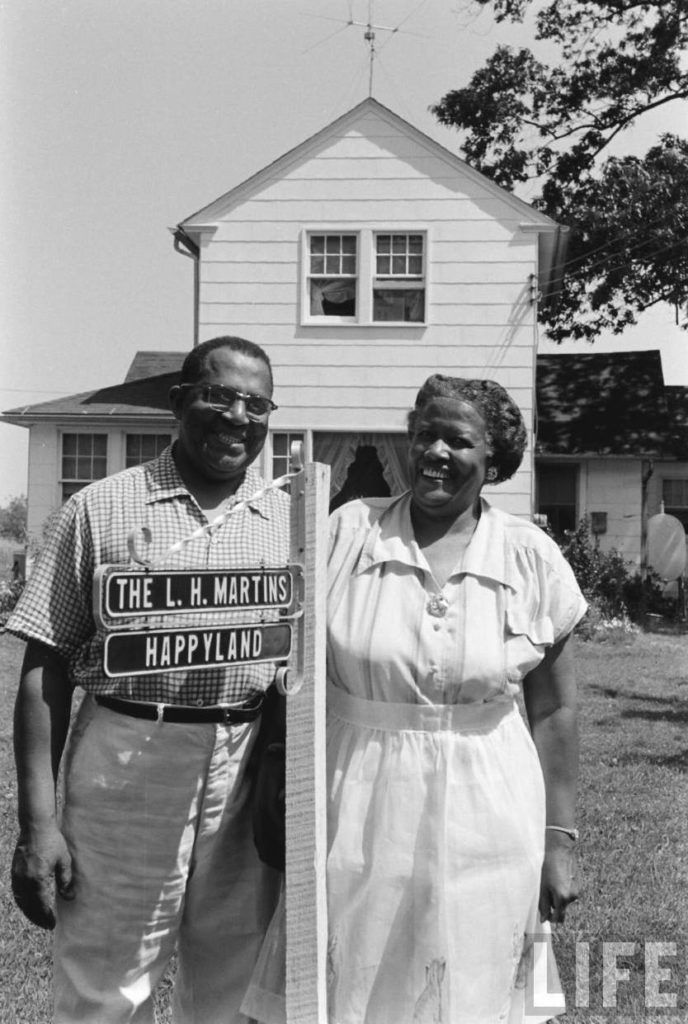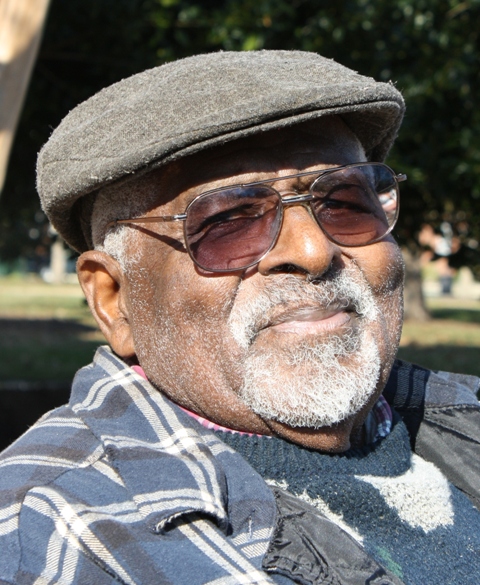
image courtesy of Life magazine archives
“Degrees by the dozen on $40 a week” was the curious headline on a lengthy Life magazine article published in September 1955.
The 10-page spread in the Sept. 19 edition of the weekly periodical chronicles the inspirational life story of Irene and Louis Martin of Somerset County, who raised 12 children and sent each to college.
Six earned degrees from what is now the University of Maryland Eastern Shore, where their father, the state’s first black agriculture extension agent, worked for four decades.
“It was left to each child,” said Oswald Martin, the third youngest. “They never told us we had to go to college. If you decided you wanted to, they were going to help.”
Delivering on that promise was a constant challenge for a government employee earning a modest salary in the first half of the 20th century, especially during the Great Depression. Martin’s top weekly pay was $80, according to the article.
The Martin children worked on their family’s farm, in the community and while attending college because the older ones knew their younger siblings were bound to follow – and put stress on the family budget.
Writer William Brinkley described how Lourene Martin, the oldest daughter who studied nursing in the 1930s at Philadelphia’s Mercy Hospital, remembered writing home she had 19 cents to her name.
Her father replied “he had only 15 cents,” Lourene told Brinkley, noting that “he was enclosing a dime of it (and) … there would be some more along as soon as everyone shelled some beans ….”
“That was the only time I ever … cried,” Lourene is quoted as saying.
That a national magazine would portray blacks in a positive light was no small thing at the time, said Robert J. Thompson, founding director of the Bleier Center for Television and Popular Culture at Syracuse University.
The nation, wrestling with segregation, had been told in 1954 by the U.S. Supreme Court in its landmark decision, Brown vs. the Board of Education (of Topeka, Kan.), that public schools should be integrated.
“The Martin family story is not condescending,” Thompson said. “It could easily have been a story about a white family. In 1955, (the article) is a significant cultural marker.”
* * *
Louis Henderson Martin was 10 years old when he went to live in a Philadelphia orphanage because both his parents had died. Frances Bartholomew ran the Eighth Ward Settlement House, and each summer, took the children in her care to a country retreat dubbed “Happyland” to broaden their view of the world beyond the city. That experience changed Martin’s life.
With support and encouragement from “Ma Thol,” Martin matriculated to Hampton Normal and Agriculture Institute in Virginia, the alma mater of Frank Trigg , Princess Anne Academy’s fourth principal, and the legendary Booker T. Washington.
At Hampton, Martin studied agriculture and met Irene E. Polk, one of 10 children from an Eastern Shore family. She earned her diploma in 1913 and he received his the following year, official documents in the Hampton University Museum’s archives show.
The couple married in September 1916, according to the 1917 edition of Hampton Institute’s “Southern Workman” magazine. They settled in Princess Anne, where Martin took a job as farm demonstration agent. His starting salary was $1,000 a year, which didn’t go far in an economy burdened by World War I.
Life magazine describes the inherent difficulties Martin encountered trying to help black farmers – and occasionally their white counterparts – see the advantages of the latest farming techniques taught at Hampton. Eastern Shore farmers struggled with low crop yields and raised scrawny livestock because they employed techniques still rooted in 19th century practices.
Martin’s hard work – especially in the prevention of hog cholera – earned him admirers but not without a struggle. Many were skeptical of an educated extension agent with new ideas on how to be more productive. His strategy involved appealing to the farmers’ sons. He organized them into clubs, where ideas about modern farming methods were shared.
Once established, however, Martin would be introduced at meetings as “Mister Doctor Professor Martin” as a show of respect. Those he assisted also expressed their appreciation by offering the occasional bag or basket of vegetables Martin carried home to feed his family.
As the Martin family grew, it settled into a small country home initially without electricity or indoor plumbing that came to be known as “Happyland,” the name inspired by the retreat where Louis Martin spent his summers as a child.
The Martins grew potatoes, corn, rhubarbs, tomatoes, onions, lima beans and string beans. Although money was always tight, the parents invested in the Harvard Classics, a collection of works by such renowned writers as Shakespeare, Dickens and Twain that set the tone for the value placed on education.
The Martin children were expected to help harvest crops the family counted on for dinner – and occasionally from other farms, too, Oswald Martin said.
“Sometimes there would be two other big families out there in those fields picking every bean they could,” he said. “That’s just the way things were.”
| Martin family alumni Louis Frazier (1940) Mary Alice (1941) Walter Theodore (1942) Martha Rebecca (1942) June Celestial (1945) Harry Bosworth (1951) Oswald Edward (1952) Janice D.¹ (1981) Alison L.¹ (1986) Stephen E.¹ (1993) |
| 1 – Mr. & Mrs. Oswald Martin’s children |

class of ’52
Born April 5, 1930, Oswald Edward Martin enrolled in Princess Anne College in 1947, the final year it was known by that name. When he finished studying building and construction in 1952, the college was called “Maryland State,” and America was again at war.
That fall, Oswald was drafted into the U.S. Army and he served in Korea, although not in a combat role. He mustered out as a sergeant after a two-year stint and worked in construction about a year in Georgia, where his sister, Martha, a 1942 Princess Anne College alumna, was a Savannah State College faculty member.
Oswald returned to his roots and followed in his father’s footsteps, working nearly three decades as a maintenance supervisor at his alma mater. He retired in 1985.
As a college student, Oswald applied what he learned in the classroom and helped build housing for students and faculty in the post-World War II campus expansion. Carpentry was his specialty, but he also learned masonry, electrical work and plumbing.
“We had to do it all,” he said.
Oswald, who was not present when the family photo was taken for the Life article, said he, his parents and siblings took the national publicity in stride. “Anybody that was close by knew about us anyway,” he said.
In May 1955 — four months before the Life article appeared — the Afro American newspapers in Baltimore and Washington celebrated Irene Martin as the “Ideal Mother of the Year.” (She was a finalist in 1950.)
Oswald recalled his mother’s excitement getting to see Dwight Eisenhower as part of the publicity tour. “It’s not every day you get to meet the President of the United States,” he said.
Oswald and his wife, Doris, raised three children, Janice, Alison and Stephen (1), all of whom are UMES graduates.
“Our parents put a high value on getting an education,” Oswald said. “And we tried to follow that example.”
The Nov. 3, 1955 edition of Jet magazine reported that Irene Martin, who appeared in a photo with President J.T. Williams, was taking “family relations” classes at Maryland State. The December 1955 edition of Readers’ Digest featured an excerpt of the Life article, so the story of the Martin family reached yet another national audience.

